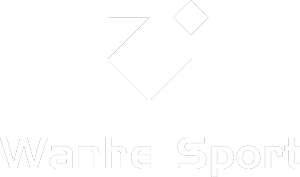Sports are an integral part of our lives, both physically and mentally. With all the physical activities that take place on a court, it is important to ensure that the surface is suitable for the specific needs of each sport, as well as providing a comfortable playing surface. As such, it is necessary to regularly resurface the playing surface of sports courts to maintain peak performance and safety standards.
Sport court resurfacing is complex but provides numerous benefits, from improved shock absorption to enhanced traction and ball control.
This article provides a detailed look at the process of sports court resurfacing, as well as the different benefits it provides to players. We will look at the various components of a court that must be resurfaced, what materials can be used, and the techniques employed to ensure a perfect job.
Finally, the article looks at the potential cost associated with sport court resurfacing and the maintenance tips to ensure it lasts for many years.
The Process of Sports Court Resurfacing
Sports courts have been around for centuries, with primitive surfaces made of dirt or grass. These surfaces were often unsuitable for the rigors of modern sports and have since been replaced by synthetic surfaces. Synthetic surfaces provide many advantages over natural ones, such as improved traction and shock absorption, but they require regular resurfacing to keep them safe and effective for players. The process of sports court resurfacing is complex, with numerous components and techniques that must be considered to ensure the best results for any particular court.
The first step in resurfacing the sports court is to inspect the existing surface fully. This involves assessing both the physical characteristics of the court as well as its condition. This inspection should include looking at cracks, chips, or any other damage that may have occurred. In some cases, a court may need to be completely resurfaced if the underlying base has become unstable. Once the inspection is complete, it is time to select the materials and techniques used for resurfacing.
The most common material used in sport court resurfacing is polyurethane concrete. Polyurethane concrete is a resilient material that improves shock absorption, traction, and ball control. It is also relatively easy to install, making it an ideal choice for court resurfacing. Other materials used in the resurfacing process include asphalt, rubberized mats, and painted surfaces. Each of these materials has its own set of benefits and drawbacks, so it is important to select the right material for a particular court.
Once the materials have been selected, it is time to begin resurfacing. This process typically involves multiple steps that involve smoothing out any existing damage, leveling off the court’s surface, and using the chosen materials to create a consistent and even surface. In some cases, advanced techniques may be employed to ensure an even better result. One of these techniques is the use of heat in the resurfacing process. This technique can provide a stronger bond between the chosen material and the underlying base and improve athletes’ traction and shock absorption.
The cost of sports court resurfacing will depend on the size of the court, the materials used, and any additional techniques employed. In most cases, it may be possible to resurface a small-sized court for around $2,000. Larger courts may require more materials, involve additional labor costs, and can easily run up to $10,000 or more. It is important to research the different costs associated with sport court resurfacing and select a contractor who can provide competitive rates.
Following some basic maintenance tips is important to keep a sports court in good condition for as long as possible. This includes regular sweeping of the court surface to remove any dirt and debris and to look for any cracks or chips that may need to be repaired. Additionally, it is important to use court-approved cleaning products regularly to help prevent damage from the elements. With proper maintenance and occasional resurfacing, a sports court can provide years of use for athletes of all levels.
Why Should You Go for Sport Court Resurfacing
Sport court resurfacing is important in maintaining sports courts, such as tennis courts, basketball courts, and other sports surfaces. Resurfacing sport court surfaces increases traction, safety, and the life of the sports court surface. Doing sport court resurfacing correctly can also help to improve the sports court’s appearance and performance, as well as help to reduce sport-related injuries.
When sport court surfaces become worn out due to use or weather conditions, they must be regularly resurfaced to maintain their excellence. Sport court resurfacing involves:
- Grinding away the top layer of the sports court surface.
- Reapplying a special sport court material or sport court paint.
- Applying sealers to ensure the sports court is sealed and protected.
By regularly resurfacing sports courts, you can extend their life and reduce maintenance costs while improving your sport court’s performance and appearance.
How Often Sport Court Resurfacing Should be Done
The frequency with which you should have your sports court resurfaced depends largely on the amount of use that it gets. Courts used for professional games and tournaments need to be resurfaced more frequently than those used for recreational purposes. Generally, regularly used courts should be resurfaced every 2-4 years, while courts with lower usage can often go without resurfacing for up to 5-7 years. Of course, it is important to check the condition of your sport court regularly and have it resurfaced if necessary.
In addition to regular resurfacing, other maintenance tasks may be required to keep your sport court in top condition. These include power washing the surface, crack repair, and painting lines and logos.
Sport Court Resurfacing Methods
Sport court resurfacing can be complicated, as different sports court surfaces and materials require specialized sport court resurfacing methods. It is important to consult a sports court contractor that specializes in sport court resurfacing so that you can ensure your sport court’s surface is properly resurfaced. Here are some of the common sport court resurfacing methods:
Dry-Ice Blasting: This method involves using dry ice pellets to remove the old surface of the sports court and prepare it for resurfacing. The pellets are blasted onto the court and immediately freeze the old surface, allowing it to be removed easily.
Powerwashing: This method involves using high-pressure water jets to clean and remove dirt and debris from the sports court’s surface, which can then be resurfaced easily as needed.
Sand Blasting: Sand blasting is another popular method for resurfacing sports courts, although it is not as effective as dry-ice blasting or power washing. This method involves using sand or other abrasives to blast away the old surface of the sports court, allowing for a smooth new surface to be applied.
Grinding: Grinding is an effective method for resurfacing sports courts, but it is also a more time-consuming and labor-intensive process. Grinding involves using specialized tools to grind away the old surface of the sports court, allowing for a smooth new surface to be applied.
Stenciling: This method involves using stencils to create patterns and designs on the sports court’s surface to improve its appearance and performance. This process is relatively easy and can be done quickly, although it requires some skill to ensure a good result.
Painting: Painting is another effective method for resurfacing sports courts and can be used to add a new design or color to the court’s surface. It is important to use special sport court paints and sealers to ensure that the paint will last as long as possible.
Sealers: Finally, sealers are often applied after the other methods of sports court resurfacing to protect the sports court from weather damage and wear and tear. They act as a protective layer over the court’s surface and can help to increase its life and performance.
It is essential always to use the proper resurfacing methods when it comes to sport court resurfacing to ensure the surface remains safe and performs optimally for all players. Additionally, using the wrong methods can lead to costly repairs or even the replacement of your sports court surface. If you are looking for professional sports court resurfacing services, it is important to consult an experienced sports court contractor with the necessary experience and expertise to complete the job correctly. This way, you can ensure your sport court’s surface is properly maintained so that it is safe for athletes to use and performs optimally for years to come.
More Than Just Repairs
Resurfacing a court goes beyond mere repairs and can be used to customize it to fit a range of sports or activities.
By resurfacing, one can add blended lines or cushioned surfaces to their court to improve shock absorption.
Furthermore, resurfacing can even be used to transform a single sport court into an all-purpose multi-sports court.
Converting a single sport court into an all-purpose multi-sports court involves resurfacing the existing surface to add blended lines, cushioning, and other features suitable for multiple sports.
The process starts with grinding away the existing surface using dry ice pellets or sandblasting to remove the existing top layer and prepare for the new surface.
Then, a special sport court material or paint is applied to create the desired look and markings suitable for multiple sports such as basketball, tennis, volleyball, handball, and more.
Finally, sealers are applied to protect the court’s surface from weather damage and wear and tear.
Afterward, the court is ready for use, and athletes can play multiple sports on the same surface. This process requires expertise and experience to be done properly.
To achieve the best results, it is important to consult a professional sports court contractor who understands the different sport court surfaces and materials. This way, you can get an expert opinion on what kind of resurfacing will best suit your court. Using the right methods and materials for sport court resurfacing, you can ensure that your sports court is safe, attractive, and performs optimally.
Conclusion
By opting for sport court resurfacing, you can extend your sports courts’ life while improving their performance and safety. If you want to make sure that your sports courts are properly maintained and performing at their best, sport court resurfacing is a great option. A professional sports court resurfacing company will be able to provide the correct sport court resurfacing materials and sport court paint, as well as advice on sport court maintenance and performance.

